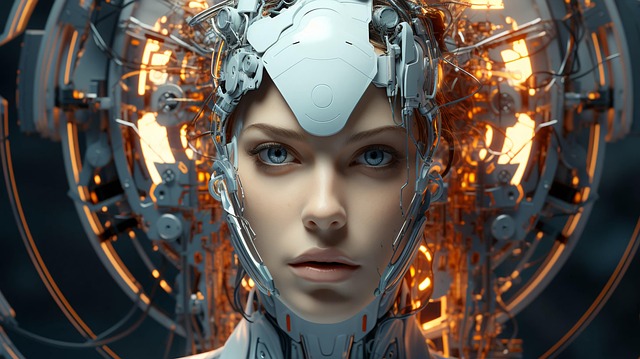# The Impact of AI Technology on Workforce Dynamics and Future Employment Opportunities
Artificial Intelligence (AI) technology is reshaping industries and redefining workforce dynamics at an unprecedented pace. As organizations increasingly adopt AI tools to enhance productivity and streamline operations, understanding the implications of this technological shift becomes crucial for both employers and employees. This article explores the multifaceted impact of AI on workforce dynamics and examines the future of employment opportunities in an AI-driven world.
## Transforming Workforce Dynamics
To begin with, AI’s integration into the workplace is fundamentally altering how tasks are performed. Automation of routine tasks allows employees to focus on more complex and creative aspects of their jobs. For instance, AI algorithms can analyze vast amounts of data far more quickly than human analysts, enabling businesses to make informed decisions based on real-time insights. This shift not only enhances efficiency but also fosters a culture of innovation, as workers are encouraged to engage in higher-level problem-solving and strategic thinking.
Moreover, the introduction of AI tools is leading to a redefinition of job roles and responsibilities. Traditional positions are evolving, with many jobs being supplemented by AI capabilities. For instance, customer service roles are increasingly supported by AI chatbots that handle initial inquiries and routine questions, allowing human agents to concentrate on more nuanced customer interactions. As a result, employees must adapt to these changes, acquiring new skills that complement AI technologies rather than compete against them.
Interestingly, the rise of AI is also prompting a shift in organizational structures. Companies are increasingly adopting agile methodologies, which emphasize flexibility and collaboration. AI facilitates this transformation by providing insights that help teams make data-driven decisions quickly. Consequently, organizations are moving away from rigid hierarchies toward more dynamic, cross-functional teams that can respond rapidly to changing market conditions. This evolution not only enhances productivity but also creates a more engaging work environment.
## The Evolving Skillset Landscape
As AI continues to permeate various sectors, the demand for specific skill sets is undergoing a significant transformation. In particular, skills related to data analysis, machine learning, and AI programming are becoming increasingly valuable. Employers are now seeking candidates who possess a blend of technical expertise and soft skills, such as creativity, emotional intelligence, and adaptability. This shift reflects the need for a workforce that can navigate the complexities of AI-driven environments while maintaining a human touch.
In light of this evolving landscape, educational institutions and training programs are re-evaluating their curricula to better prepare students and professionals for the future job market. Emphasis is being placed on STEM (science, technology, engineering, and mathematics) education, as well as interdisciplinary approaches that combine technical skills with critical thinking and ethical considerations. By fostering a diverse skill set, individuals can position themselves as valuable assets in an AI-enhanced workforce.
Furthermore, lifelong learning has emerged as a critical component of career development in the age of AI. Professionals must be proactive in seeking out opportunities for upskilling and reskilling to remain relevant in an ever-changing job market. Online courses, workshops, and industry certifications are becoming essential tools for individuals looking to enhance their knowledge and adapt to new technologies. This commitment to continuous learning not only benefits individuals but also contributes to the overall resilience of the workforce.
## Future Employment Opportunities
Looking ahead, the future of employment opportunities in an AI-driven world presents both challenges and potential. While concerns about job displacement due to automation are valid, it is essential to recognize that AI technology also creates new roles that did not previously exist. For example, the demand for AI ethicists, data scientists, and machine learning engineers is on the rise, reflecting the need for expertise in managing and regulating AI systems.
Moreover, the gig economy is likely to expand as AI technologies enable more flexible work arrangements. Freelancers and independent contractors may find new opportunities to leverage their skills in various projects, supported by AI platforms that connect talent with businesses. This shift toward a more decentralized workforce can offer individuals greater autonomy and the ability to curate their career paths according to their preferences and expertise.
Interestingly, sectors such as healthcare, education, and green technology are poised for significant growth as AI continues to evolve. In healthcare, for instance, AI is being utilized for predictive analytics, personalized medicine, and administrative automation, leading to improved patient outcomes and operational efficiencies. Similarly, in education, AI-driven personalized learning platforms are transforming the way students engage with content, allowing for tailored educational experiences that cater to individual learning styles.
In conclusion, the impact of AI technology on workforce dynamics is profound and far-reaching. As organizations adapt to the integration of AI, employees must embrace the changes and develop new skills to thrive in this evolving landscape. While challenges such as job displacement may arise, the opportunities for innovation, growth, and collaboration are equally significant. By fostering a culture of lifelong learning and adaptability, individuals and organizations can navigate the complexities of an AI-driven future and unlock new avenues for success in the workforce.











